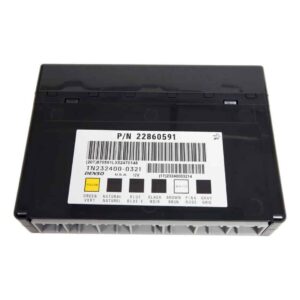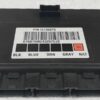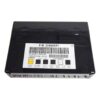Restore Your Vehicle’s Electrical System with a Reliable, Programmed BCM
If you’re dealing with a frustrating array of electrical problems—flickering lights, malfunctioning power windows or locks, or a security system that acts up—the culprit is often a failing Body Control Module (BCM). As a technician with over two decades of experience, I’ve seen how a faulty BCM can turn a reliable vehicle into a source of constant headaches. It’s the central nervous system for your car’s comfort and convenience features, and when it fails, chaos ensues. This isn’t just an annoyance; it can be a safety issue when exterior lights or security features are compromised.
This replacement Body Control Module is the direct, dependable solution. We take the guesswork and hassle out of the repair by pre-programming the module to your vehicle’s specific VIN. This means it arrives at your door with the latest GM software updates already installed, ready for installation. You get a part that communicates perfectly with your vehicle’s other systems, restoring full functionality without a costly trip to the dealership for programming.
A Technician’s Notebook: The Case of the Haunted Impala
I remember a 2009 Impala that came into the shop with a list of bizarre symptoms. The owner said the dash lights would flicker randomly, the radio would shut off, and sometimes the car wouldn’t start, showing a ‘Service Theft System’ message. He’d already replaced the battery and checked the alternator. After connecting my scan tool, I found multiple communication loss codes (U-codes) pointing to the BCM. These modules can fail internally, causing data corruption on the network. We installed a VIN-programmed BCM just like this one, and every single issue disappeared. It’s a classic example of how one component can cause widespread, confusing problems.
Common Signs of a Failing GM BCM
A failing Body Control Module can manifest in numerous ways. If your vehicle is showing any of these signs, your BCM is the likely cause. Look out for communication codes like U0140, U0155, or other related DTCs.
- ✔ Erratic or non-functional interior and exterior lights (headlights, taillights, dome lights).
- ✔ Power windows, door locks, or mirrors working intermittently or not at all.
- ✔ The security or anti-theft system engaging incorrectly, preventing the car from starting.
- ✔ Dashboard warning lights appearing and disappearing without reason.
- ✔ Horn, windshield wipers, or other accessories failing to operate.
- ✔ Problems with the keyless entry system.
Your Straightforward BCM Installation Guide
Installing your new Programmed GM BCM is a manageable job for a confident DIYer or a quick task for any professional mechanic. Since we program it beforehand, you skip the most complex step.
- Safety First: Always disconnect the negative terminal from your vehicle’s battery before starting any electrical work.
- Locate the BCM: The BCM’s location varies. On many GM vehicles like the Impala, Acadia, or Traverse, it’s behind the driver’s side lower dash panel. In Express/Savana vans, it’s often in the center dash area. For trucks like the Tahoe or Yukon, check under the steering column.
- Remove the Old Module: Carefully unplug the electrical connectors. They have locking tabs that need to be pressed to release. Then, unbolt or unclip the module from its mounting bracket.
- Install the New Module: Mount the new, pre-programmed BCM in the same position as the old one. Securely plug in all electrical connectors, ensuring they click into place.
- Reconnect and Test: Reconnect the negative battery terminal. Turn the key to the ‘On’ position and test all body functions: lights, locks, windows, wipers, etc.
- Perform Relearn Procedures (If Needed): In some cases, you may need to perform additional steps. If the airbag light is on, an ‘SDM Primary Key’ sync is required with a scan tool. A ‘Brake Pedal Position Relearn’ might also be necessary for proper brake light and traction control operation.
Will This Fit My Vehicle?
We guarantee compatibility if your vehicle is on this list and you provide a valid VIN for programming. This module replaces a wide range of original part numbers, including: 10382479, 15093910, 15276271, 15299986, 15819552, 22860591, 25892622, and many more.



